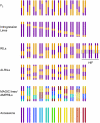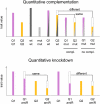Natural variation in Arabidopsis: from molecular genetics to ecological genomics
- PMID: 22147517
- PMCID: PMC3252104
- DOI: 10.1104/pp.111.189845
Natural variation in Arabidopsis: from molecular genetics to ecological genomics
Figures






Comment in
-
Founders review 2012.Plant Physiol. 2012 Jan;158(1):1. doi: 10.1104/pp.111.900428. Plant Physiol. 2012. PMID: 22213247 Free PMC article. No abstract available.
References
-
- Adams S, Allen T, Whitelam GC. (2009) Interaction between the light quality and flowering time pathways in Arabidopsis. Plant J 60: 257–267 - PubMed
-
- Alcázar R, García AV, Kronholm I, de Meaux J, Koornneef M, Parker JE, Reymond M. (2010) Natural variation at Strubbelig Receptor Kinase 3 drives immune-triggered incompatibilities between Arabidopsis thaliana accessions. Nat Genet 42: 1135–1139 - PubMed
-
- Alonso JM, Ecker JR. (2006) Moving forward in reverse: genetic technologies to enable genome-wide phenomic screens in Arabidopsis. Nat Rev Genet 7: 524–536 - PubMed
Publication types
MeSH terms
Substances
LinkOut - more resources
Full Text Sources

